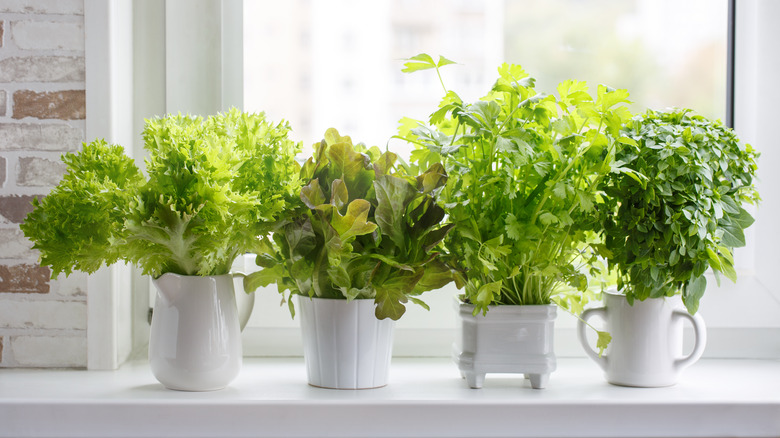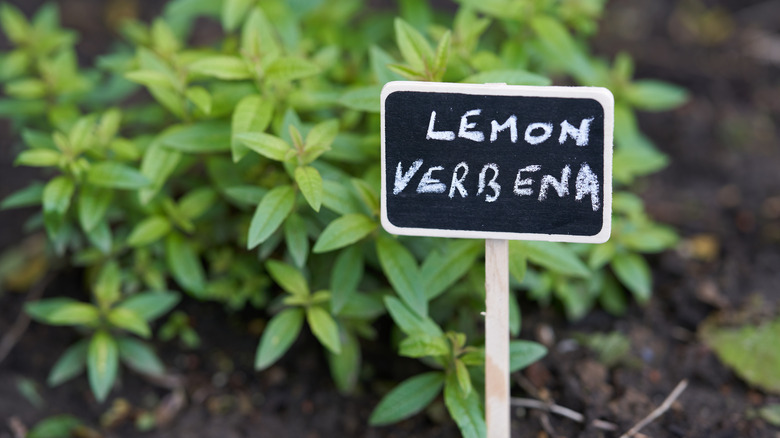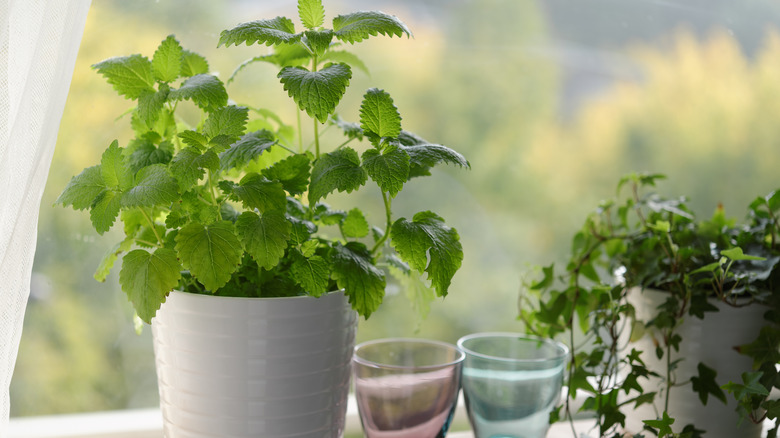Give Your Home A Natural Lemony Fragrance With This Indoor Plant
The scent of lemon is often associated with cleanliness. In fact, lemon is considered the best scent for open houses for those trying to sell their homes. While you can certainly use lemon essential oils to make your home fragrant, there are also certain indoor plants that can provide a natural lemony fragrance.
You may have heard of lemon balm, lemon basil, lemon mint, and lemon eucalyptus as potential options, but one of the strongest-scented lemony fragrances to come from a plant may be attributed to lemon verbena (Aloysia citrodora). Lemon verbena is a type of woody shrub that's indigenous to Central and South America, producing narrow leaves with a glossy green tint. It can also grow white flowers, making it both a fragrant and attractive plant to have in your home.
Lemon verbena also has some of the strongest foliage of all lemon-scented plants. As such, the leaves are picked for a variety of uses, including for cooking, teas, water infusions, and even to make potpourri. Alternatively, instead of plucking leaves from outdoor plants, you can simply grow lemon verbena plants indoors in small containers. Before you plant this lemony shrub indoors, it's important to know how to grow and care for it so you can potentially enjoy the coveted fragrance year-round.
Tips for planting and growing lemon verbena indoors
You can certainly grow lemon verbena indoors, but remember that these plants are tender, especially when it comes to temperature fluctuations. When considering how to grow and care for lemon verbena, you'll need to keep in mind that this plant can grow up to the size of a large shrub, but can be kept in small containers so long as you give it the right attention.
In order to grow and thrive, lemon verbena requires well-draining soil as well as full sun for at least six hours per day. This means periodic watering sessions, but also keeping the plant near a window for as much direct sunlight as possible. This can be tricky at first if you're planting and growing lemon verbena indoors. However, you can be strategic about plant placement to help lemon verbena get the most sunlight possible.
Placing your plant in an eastern-facing window is best in the morning hours when sunlight is most ample as the sun rises. Southern-facing windows tend to get the most sunlight throughout the day, which is especially helpful for lemon verbena during the winter months. If you're starting to see signs that your plant isn't getting enough sunlight — in the form of long, thin stems – you can consider supplementing with artificial plant lights. Also, try your best to choose a location that's away from any air or heat vents, as well as drafts.
Lemon verbena maintenance and potential hazards
Despite its need for a lot of sun to grow, this plant is considered relatively easy to maintain. Aside from adequate light, lemon verbena prefers moist (but not saturated soil). Use a spray bottle of water to moisten the soil any time it feels dry to the touch. You can also add a liquid fertilizer to the soil once every two weeks to help boost growth. Additionally, occasional pruning is recommended to help keep lemon verbena plants healthy. To do this, cut any dead or browning leaves as well as an inch off the height of the plant to prevent it from growing too large. You'll likely see the most growth take place in the months of spring and summer.
Lemon verbena isn't considered poisonous to humans, with its leaves edible and suitable for a variety of teas and dishes. While lemon verbena isn't on the list of house plants you should never grow in a home with pets, you'll still need to take care with growing this plant around certain animals. In fact, lemon verbena oil may be toxic to cats and dogs who accidentally eat the leaves of this plant. If you do have pets and are interested in growing lemon verbena indoors, be sure to keep any planters out of their reach.


